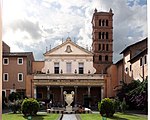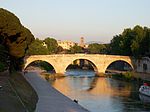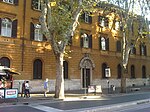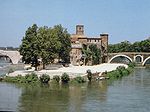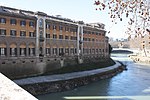San Giovanni Battista dei Genovesi

San Giovanni Battista dei Genovesi (Saint John the Baptist of the Genoans) is a Roman Catholic church on via Anicia in the Trastevere district of Rome. It is the regional church for Genoa. It was built between 1481 and 1492 by the wealthy Genoan Meliaduce Cicala, treasurer of the Camera Apostolica. It was an addition to a hospital for Genoese sailors which Cicala built at porto di Ripa Grande. In 1533 the Confraternity of Genoans was founded to administer the church and the hospital - the latter continued to function until the mid 18th century. The church was rebuilt in 1737, with an apse added to its facade. It was then little altered until the mid 19th century, when a new facade was added and the interior redesigned. In 1890 the confraternity was renamed Opera Pia.
Excerpt from the Wikipedia article San Giovanni Battista dei Genovesi (License: CC BY-SA 3.0, Authors, Images).San Giovanni Battista dei Genovesi
Via dei Genovesi, Rome Municipio Roma I
Geographical coordinates (GPS) Address External links Nearby Places Show on map
Geographical coordinates (GPS)
| Latitude | Longitude |
|---|---|
| N 41.8881 ° | E 12.4754 ° |
Address
San Giovanni Battista dei Genovesi
Via dei Genovesi
00153 Rome, Municipio Roma I
Lazio, Italy
Open on Google Maps
